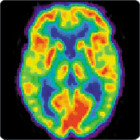
How Money Crunch Can Spur Reform
|
A new report makes the case for juvenile justice reform despite financial constraints. The study, called The Real Costs and Benefits of Change, comes from The National Juvenile Justice Network, and outlines pro-active measures that advocates can take to cut spending without cutting effective programs. Their core mission is to put fewer young people in jail or detention, without sacrificing safety. It recommends using the budget crisis facing cities and states to promote shutting down facilities by showing how much money can be saved; and using that money to fund less expensive community-based alternative programs.
The authors lay out specific tactics and cite numerous examples in Wisconsin, Ohio, Illinois, California, New York, Oregon, Rhode Island, New Mexico.




